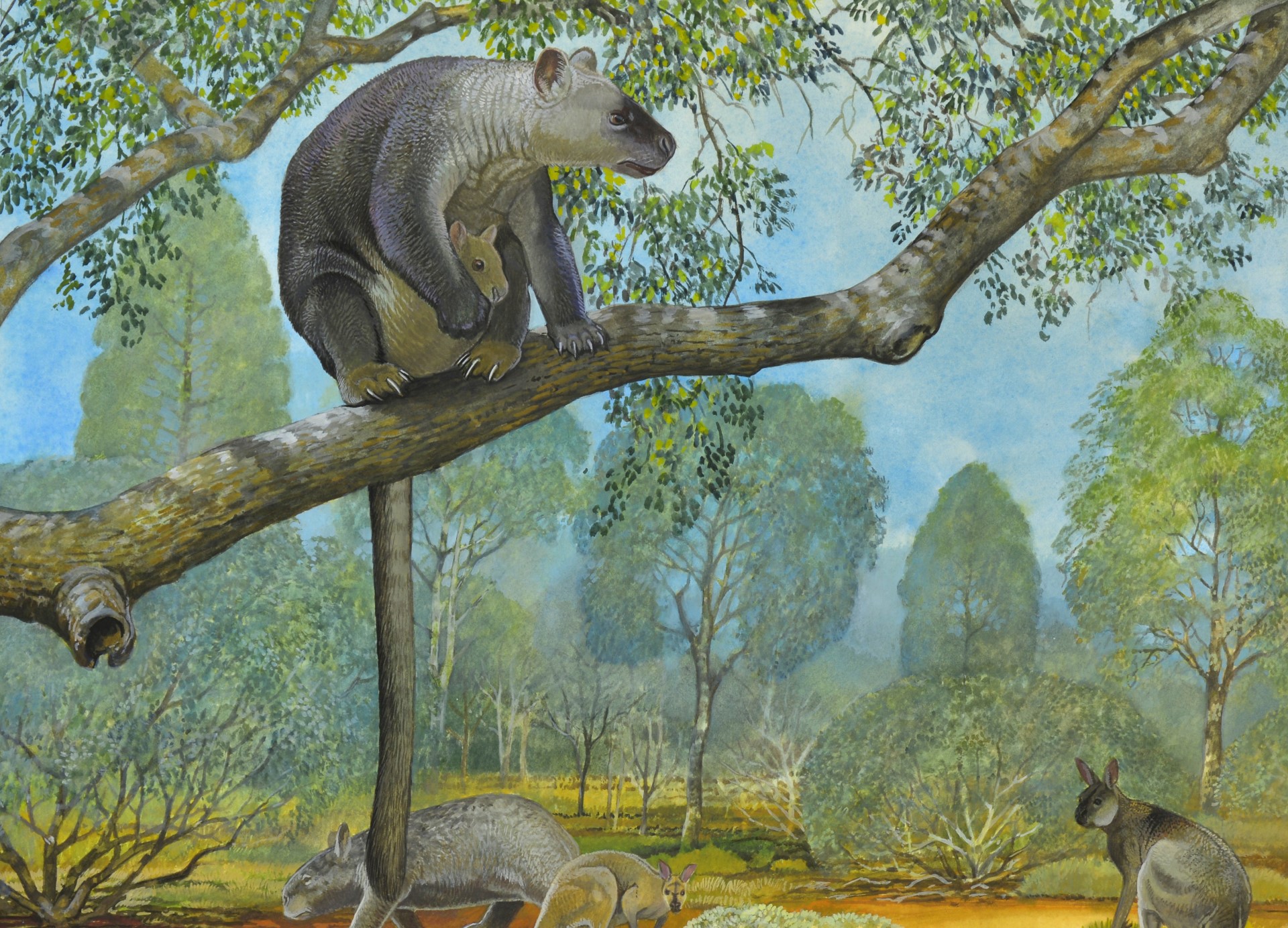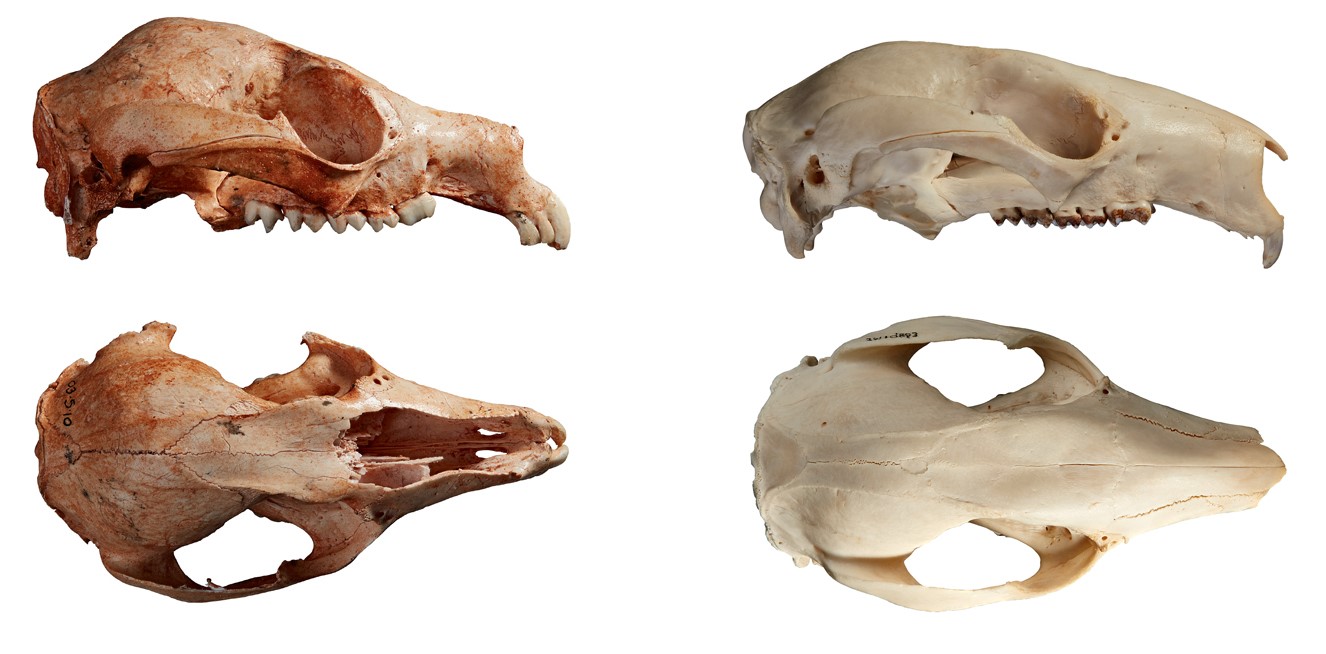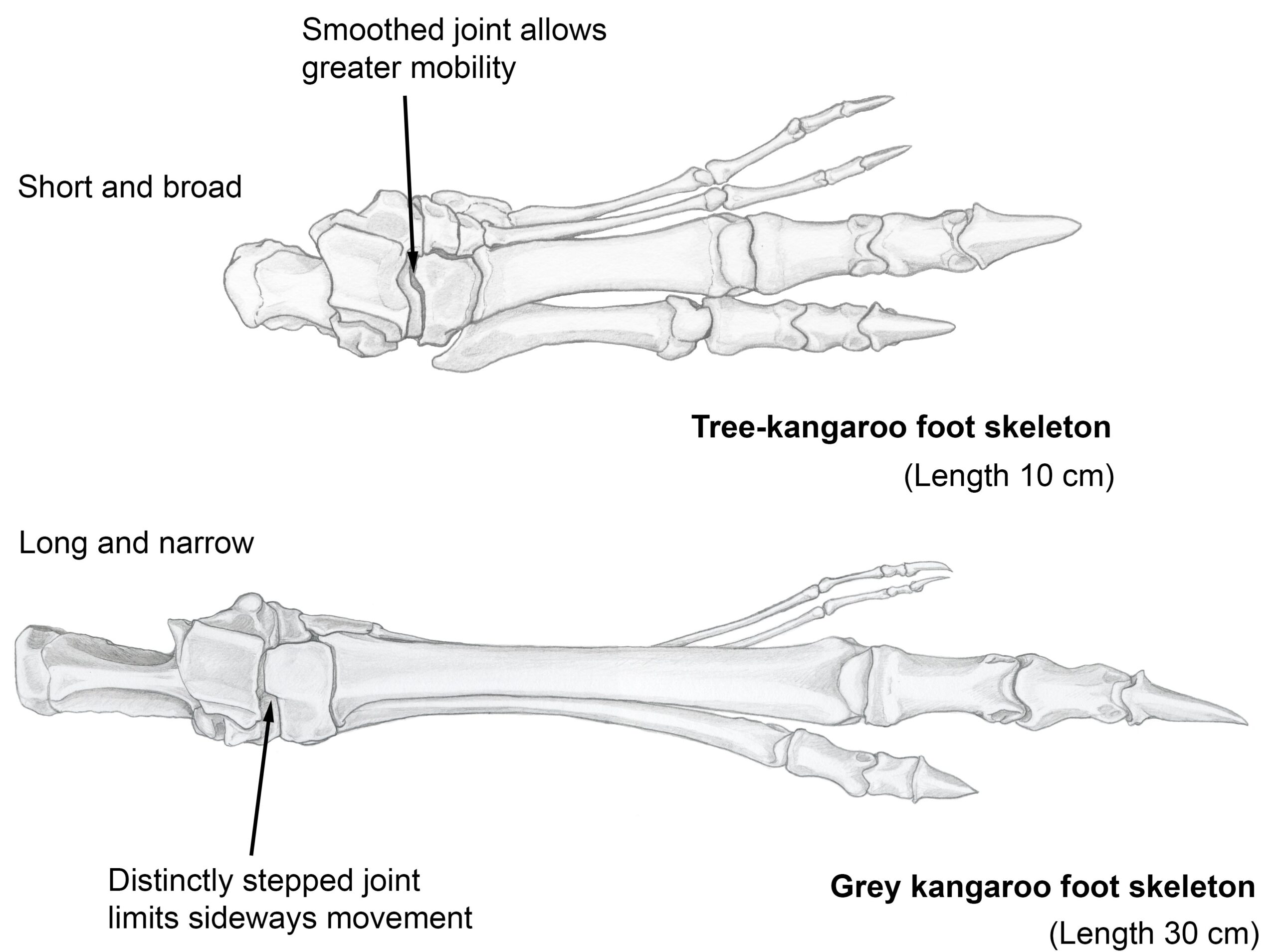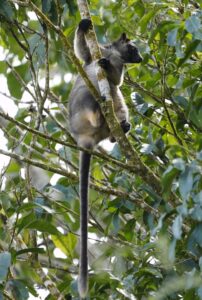
Tree-kangaroos today are found only in tropical forests of far northern Queensland and New Guinea, but new fossil research has revealed that giant tree-kangaroos were once widespread across Australia, even in drier areas.
Searching through museum collections, Professor Gavin Prideaux of Flinders University and Associate Professor Natalie Warburton from Murdoch University identified more than 100 teeth and bones belonging to seven species in the extinct genus Bohra.
Ages of the fossils range from 3.5 million to around 250 thousand years old, though some may have survived until more recently.

“Species of Bohra lived in central, southern and eastern Australia. Habitats in these areas at the time included woodland and savannah. The association between living tree-kangaroos and rainforest is a recent phenomenon, and has come about only because of the extinction of giant tree-kangaroos from non-forest habitats,” says Professor Prideaux, from Flinders University’s Palaeontology Lab.
The researchers speculate that tree-kangaroos first evolved around 5 million years ago as forests spread during a greenhouse phase. Later, as Australia dried out again, some species of Bohra adapted to more open habitats.
“The tree-kangaroo story is an intriguing one,” says Professor Prideaux. “They are a result of what is sometimes called evolutionary ‘reversal’, but not in a literal sense.

“The earliest members of the kangaroo family descended from possum-like ancestors, and then kangaroos became specialised for hopping along the ground. So, tree-kangaroos returned to where it all started for their distant ancestors many millions of years ago.”

To do this they needed to undo some adaptations. The characteristic body plan of kangaroos that hop on two oversized hindlegs became increasingly specialised over time.
“Kangaroos have long feet and legs, and their ankle bones lock together to limit sideways movement. This helps ensure that hopping across the ground is energetically efficient. However, flexibility and strength are advantages for climbing, so tree-kangaroos evolved shorter, more flexible legs and feet, and more powerful arms and claws”, explains Associate Professor Warburton.
Subtle differences between the extinct species, the largest of which may have weighed as much as 40 kg, suggests that their climbing abilities differed.
“Modern tree-kangaroos spend most of their time in the canopy. However, different species of Bohra probably differed in the proportion of time they spent living in trees and on the ground. This is similar to larger monkeys in Africa and Southeast Asia today,” she says.
Professor Prideaux says these important findings enable us to see how environmental change over time has shaped the evolution of Australia’s unique fauna. Studies of newly discovered fossils provide critical evidence that can change our understanding of the animals in the modern world.
Acknowledgements: The research was supported by the Australia and Pacific Science Foundation and Australian Research Council.
The article, A review of the late Cenozoic genus Bohra (Diprotodontia: Macropodidae) and the evolution of tree-kangaroos (2023) by Gavin J Prideaux and Natalie M Warburton has been published in Zootaxa (Monograph) DOI: 10.11646/zootaxa.0000.0.0 tbc
Read more in The Conversation: Giant tree-kangaroos once lived in unexpected places all over Australia, according to major new analysis

